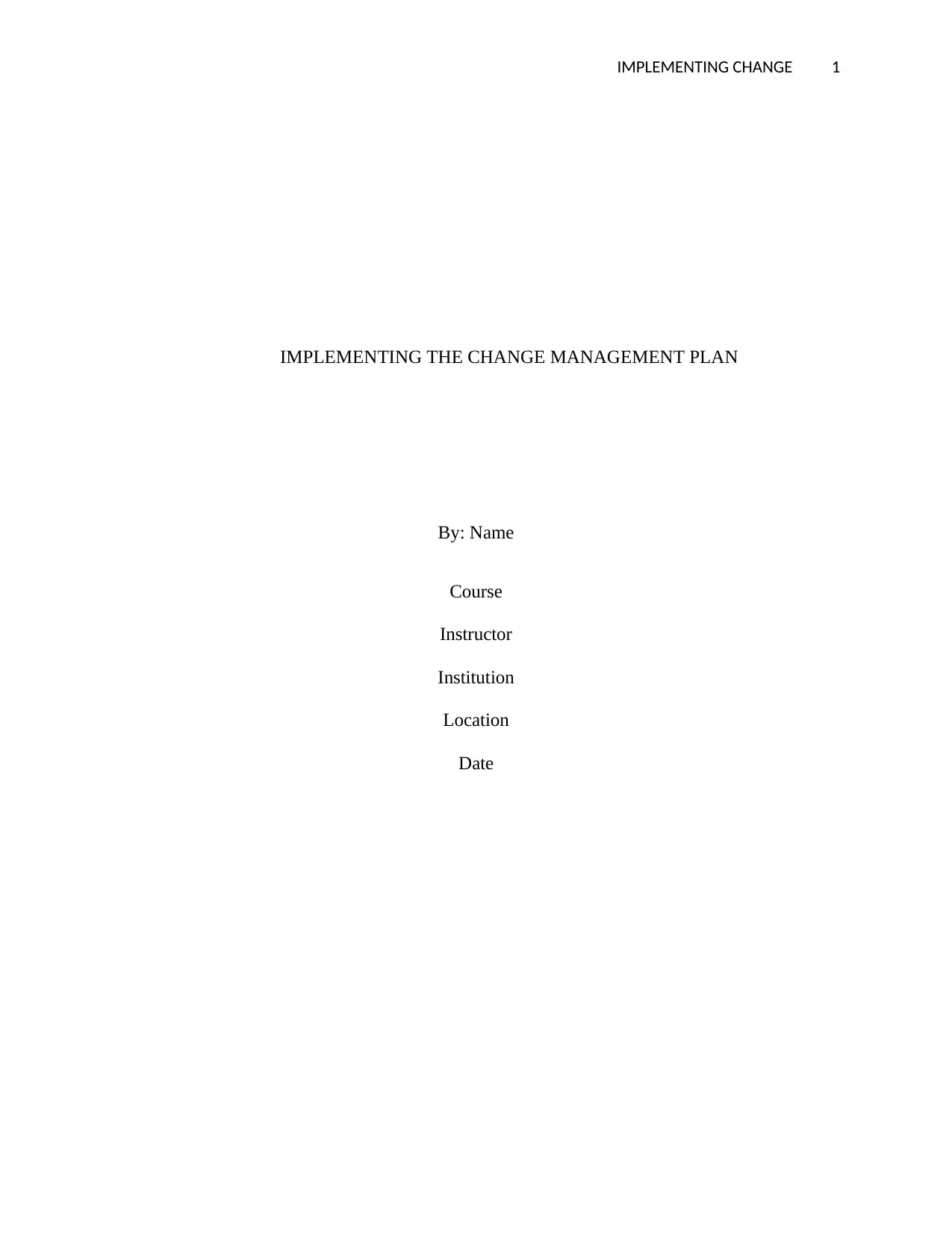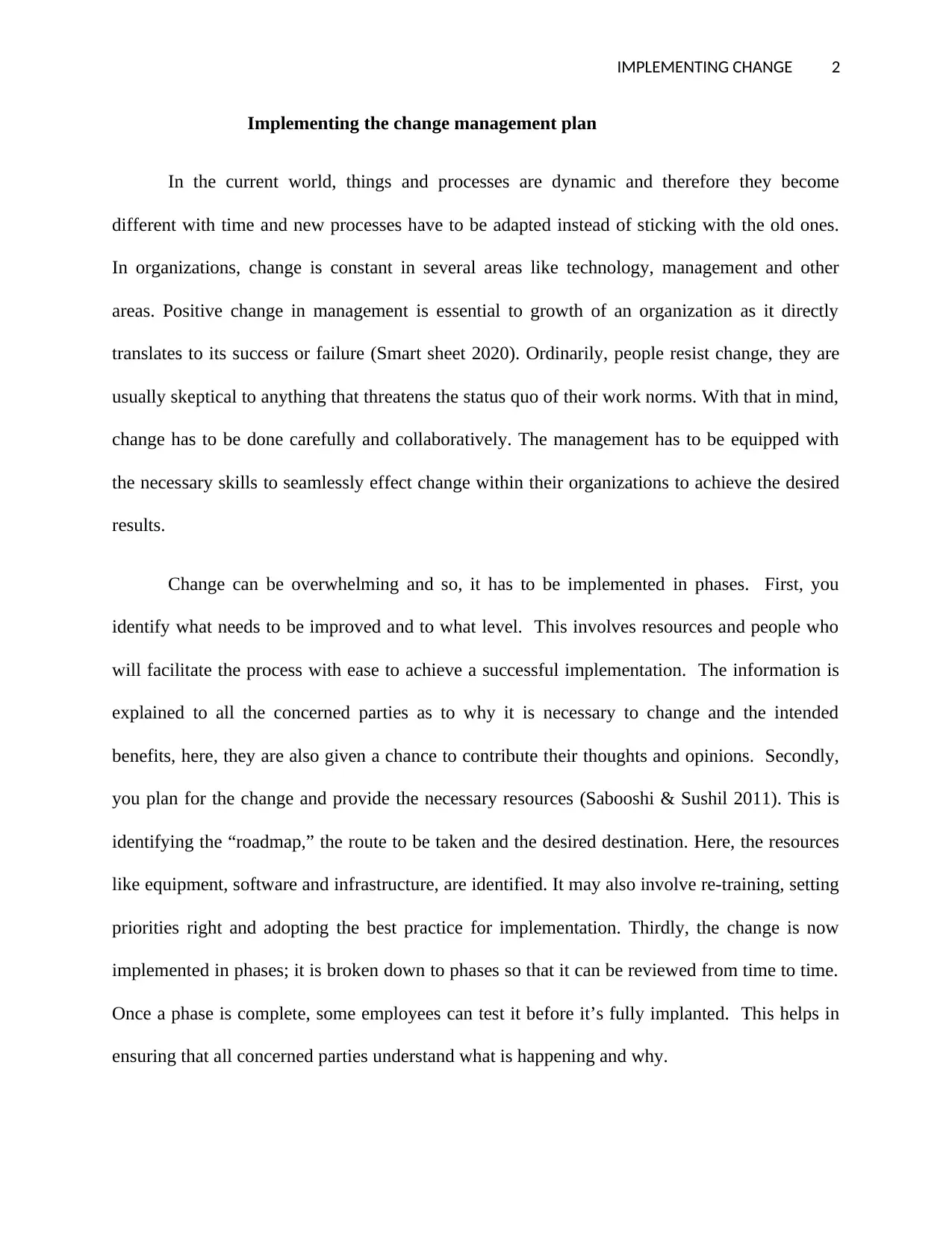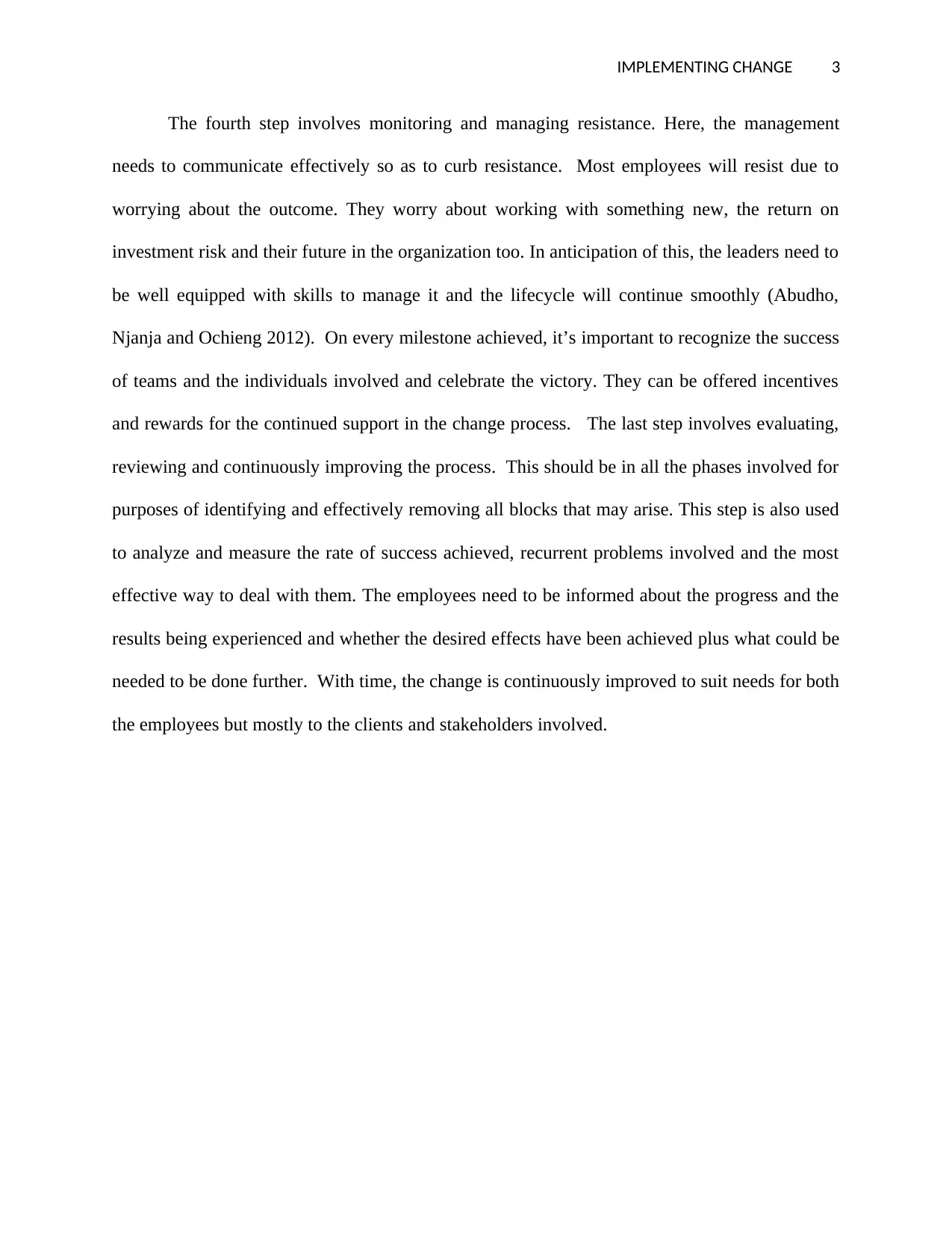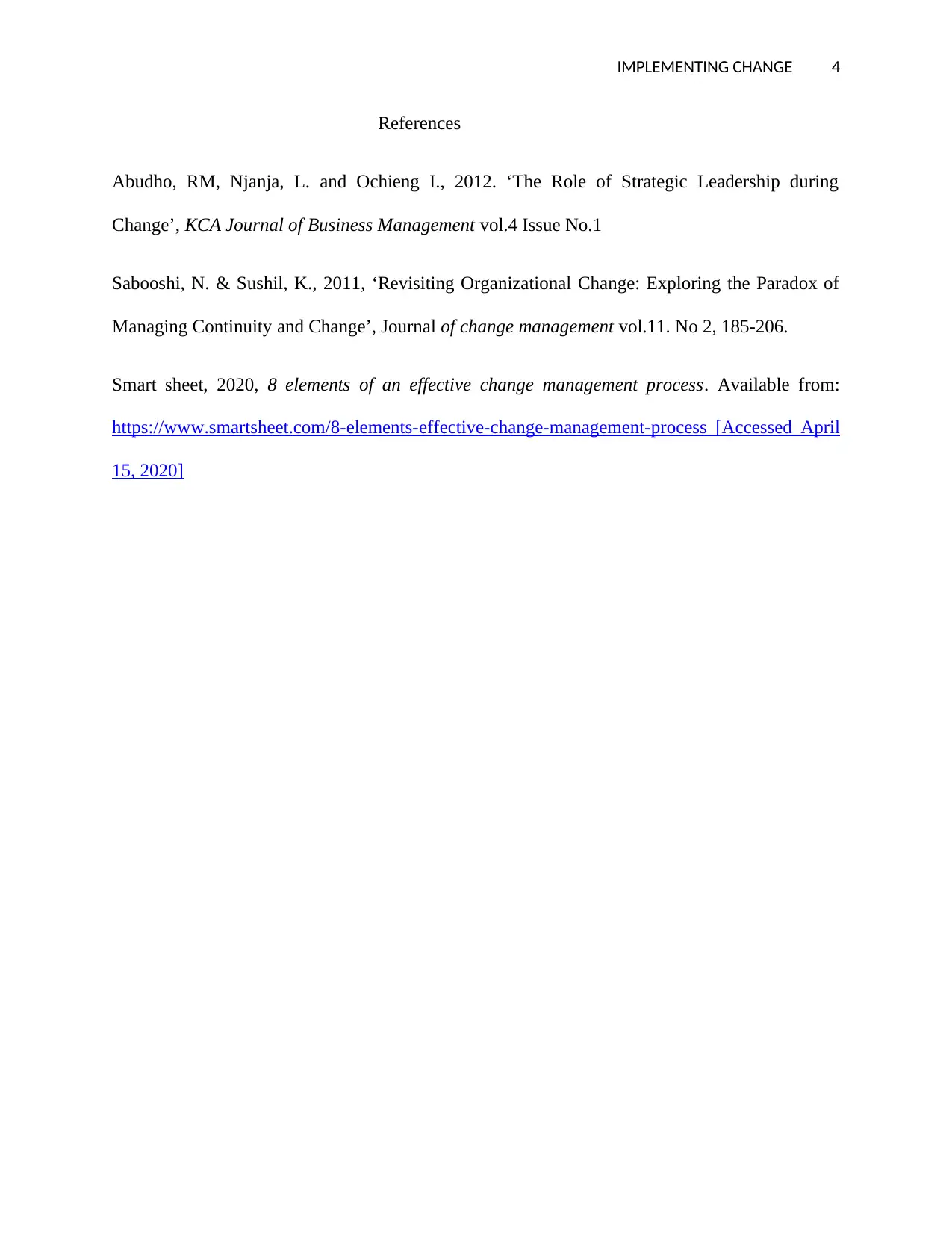Implementing Change Management Plan: KMGT 673 Report Analysis
VerifiedAdded on 2022/09/25
|4
|707
|28
Report
AI Summary
This report provides a comprehensive overview of implementing a change management plan within an organizational context. It emphasizes the dynamic nature of modern business environments and the necessity of adapting to constant changes in technology, management, and other areas. The report outlines a phased approach to change implementation, starting with identifying areas for improvement and communicating the need for change to all stakeholders. It then details the planning phase, including resource allocation and the establishment of a 'roadmap' for change. The implementation phase involves breaking down the change into manageable phases, allowing for review and testing. The report also addresses the importance of monitoring and managing resistance through effective communication, recognizing successes, and providing incentives. Finally, it emphasizes the need for continuous evaluation, review, and improvement to address any obstacles and measure the success of the implemented changes, ultimately aligning the process with the needs of employees, clients, and stakeholders. The report uses references to support its findings and recommendations.
1 out of 4










![[object Object]](/_next/static/media/star-bottom.7253800d.svg)